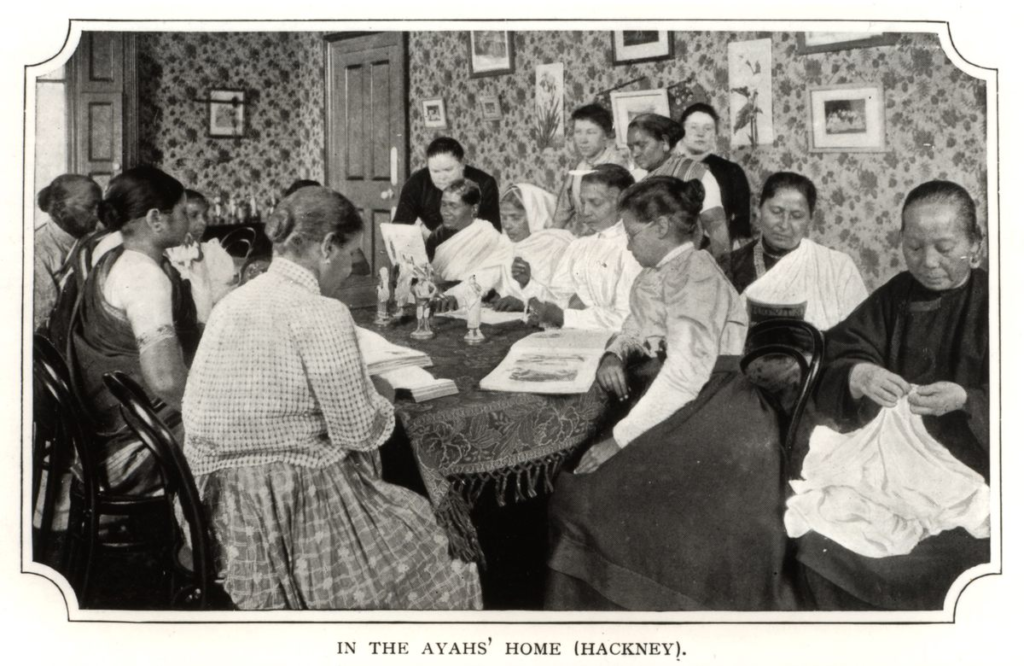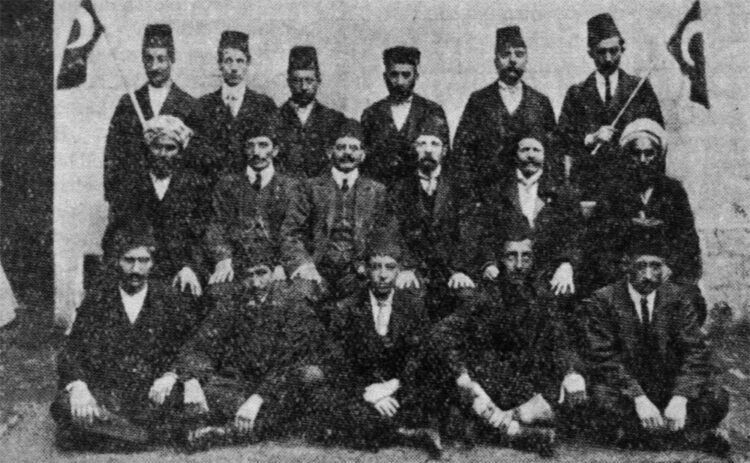During the 1800s, the British, French, and Ottoman empires dominated the globe. The British possessed the largest empire, with over a million subjects under their control. The majority of whom were Muslims. Therefore, Britain had a vested interest in understanding what Islam is and what it teaches in order to enhance its political and strategic policies. Prior to this period, Islamic law had already been incorporated into Western/Roman law, but the British utilised it to propagate propaganda such as the notion that under British rule, there is freedom of religion and government choice.
Interestingly, for centuries the Ottomans portrayed themselves as Sultans and not as Muslim rulers. There were numerous clerics and scholars in the Islamic world who advised the Sultans. After the British began to encourage Ottoman subjects to rebel, the Ottomans began to assert religious authority in an effort to unite Muslims.1
Early Muslims
The early Muslims in the UK were slaves, maids and nannyies from India, brought over by British oversea officials.2 There were also Lascars3, around 50,000 men were employed to do the menial tasks on ships, like coal work. When contracts ended, they would be dumped in UK ports. Some waited for more work so they can head back home and others made way inland to find work.

During World War I, British India enlisted 1.5 million men, of which one-third were Muslims. There was a hospital exclusively for Indians in Brighton. They also had the means to bury Muslims in accordance with religious law. They were sent to Woking for the Janaza prayer and Burial.
The smallest group of Muslims in Britain consisted of notables4 such as the Crown Prince of Afghanistan, Nasrullah Khan, and Dusé Mohamed Ali, a Sudanese activist, as well as students who travelled to the UK to study medicine and law, such as Muhammad Ali Jinnah.5
Early Mosques
In the late 1800s, three mosques were documented in the United Kingdom: the Liverpool Muslim Institute in 1887, the Regents Park Mosque in 1895, and the Woking Mosque in 1889.
London Mosque
Hadji Mohammad Dollie was born in Cape Town, South Africa in 1846 to a Scottish father and a Malay mother. In the 1880s, he and a Dutch convert to Islam founded the first Hanafi Mosque in Cape Town. He moved in London in 1895 and settled in Albert Street with his two boys, as studying in South Africa was difficult at the time.
Hadji Dollie had been approached by London’s Muslim community, which comprised approximately 200-300 people, to teach their children the Qur’an because he was a hafiz. He agreed, and he planned to transform his front room into a mosque from then on. Regular prayers, including Eid prayers, were being held within the house-mosque.
He also provided religious counsel, assisting white English converts to the faith. There were also inter-racial marriages. This was a gathering place for members of the Victorian Muslim community to discuss issues that were important to them, such as the problems of Muslim nations, particularly the Ottoman Empire, and to make requests to the leader of the Islamic State, Abdul Hamid II.

Some time later, he built a purpose built mosque on Russell Square. This Mosque doesn’t exist anymore and there isn’t much on why it was ever closed/demolished.
Shah Jehan Mosque, Woking
Dr. Gottlieb Wilhelm Leitner a Christian and orientalist intended to build a synagogue, a church, a temple and a mosque in the London area. He commissioned the purpose built Woking Mosque.6 Begum Shah Jehan7 sent £10,000 towards the construction of the Mosque.

This mosque was an institute aimed at brining the upper class to Islam like Lord Headley and Marmaduke Pikthall.8
From this Mosque, there was a journal published. The Islamic Review was the organ of the Shah Jahan Mosque at Woking. It was inaugurated in 1913 by the then Imam of the mosque, Khwaja Kamaluddin, and ran until 1967. Interestingly Kamaluddin was an Ahmadi. To a western audience the ins and out of faith were unknown so as far as everyone was concerned he was a Muslim scholar.
Liverpool Muslim Institute, Liverpool
Abdullah Quilliam was a lawyer and journalist from Liverpool. He was brought up as a non-conformist Christian and Templar.9

Quilliam converted to Islam in 1887 while recuperating from an illness in Morocco. Following his conversion, Quilliam acquired numbers 8, 11, and 12 Brougham Terrace in Liverpool, courtesy to a donation of £2500 from Nasrullah Khan, Crown Prince of the Emirate of Afghanistan. On Christmas Day 1887, 8 Brougham Terrace became the Liverpool Muslim Institute, the country’s first functional mosque. Quilliam also established a boarding school for boys and a day school for girls, as well as Medina House, an orphanage for non-Muslim parents who were unable to care for their children and consented to raise them as Muslims. The Institute also included a museum and a science laboratory, as well as instructional workshops on a variety of topics. He initially authored The Faith of Islam in 1889, which dealt with dawah to Islam and its main ideas. Quilliam also publishes The Crescent, a weekly account of Muslims in the United Kingdom, as well as Islamic World, a monthly journal with a global readership.
It is estimated that around 600 people converted to Islam in Britain as a direct result of Quilliam’s work. All of his family were Muslims, parents, wife and children.

Many of those who entered the mosque were cotton merchants from the Ottoman empire who had settled in Manchester. In the mosque, they would celebrate Eid and Milaad. Due to this connection, the Ottomans also recognised the mosque. When Abdul Hamid II met him, he referred to him as Shaykh al-Islam for the British Isles. As noted above, Muslims outside the Islamic world perceived the Ottomans to be protectors of all Muslims. In Quilliam’s mosque, the Khutbah was therefore recited in the name of the Sultan. Furthermore, the Emir of Afghanistan recognised him as the Sheikh of Muslims in Britain and he was appointed as Persian Vice Consul in Liverpool by the Shah.
In Cairo, it was believed that such a mosque was British propaganda, therefore a Turk named Asmay was dispatched to the United Kingdom to investigate . As he spoke poor English, a Muslim female American editor of the Crescent interpreted for him. Nafeesa was a Hanafi and proficient in Hanafi fiqh nd works like the Hidaya.10 Asmay was informed by Nafeesa that Quilliam and co are weak Muslims who do not practise their religion properly. Unorthodox customs included reading the Khutbah in the name of the Sultan and Queen Victoria, Sunday Service (they would eliminate any shirk and also read from the Quran in English), men and women sat together during prayer, prayer not at the precise times, and so on. During his interview with Quilliam, Asmay accused him of being a Pan-Islamist.
Scholars and historians continue to debate the truth of Quilliam’s Aqidah. We are aware that Liverpool resisted his success in converting local Christians. Therefore, it is possible that he chose a hybrid approach to appeal to a wider audience without making his practises too exotic. However, he never compromised on Aqidah. He may have viewed Islam in the manner he manifested it, as in, he felt as long as he keep to the tenants of faith, he is free to call people to Allah in whatever way is appealing. Similar to how Pakistanis have understood Islam when they arrived in the United Kingdom in the 1960s, the Mustahab acts became obligatory to ensure complete observance of the faith was practised and also pushed on others.
From this point on, there has been an increase in the number of Muslim immigrants to the United Kingdom from over 100 countries, as well as the number of native Britons who have converted to Islam. As of 2021, there are four million Muslims in the UK.
Footnotes
- This is one perspective. Ottoman history is vast and needs to be studied holistically and locally.
- There is a lodge for the abandoned nannies in Hackney.
- non-European sailors employed by British
- Middle and Upper classes
- studied Law in 1896
- Leitner also built the Punjab University
- Female Muslim ruler of Indian state
- Later translates the Quran
- Templars wanted Alcohol banned. He was a temperance child so actually never ever drank alcohol
- Interestingly, the British Courts had copies of Hidaya to consult Islamic Law when they were dealing with Muslims.
